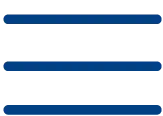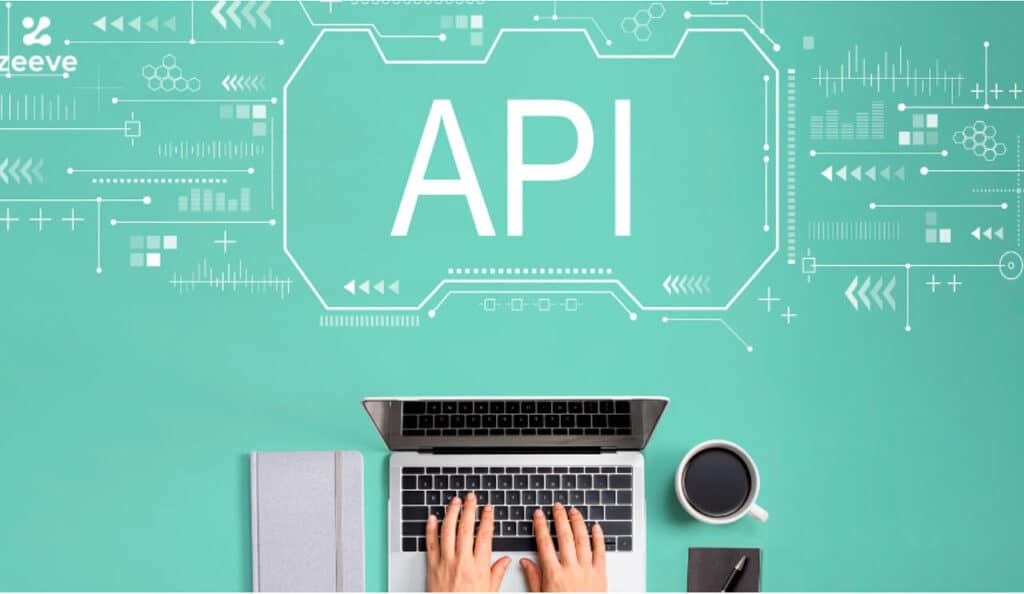In today’s digital world, it is very important to ensure that phone numbers are real and work well for both businesses and individuals. The need to check phone numbers has led to the creation of new technologies, such as the HLR Lookup API. This useful tool helps verify mobile and landline numbers worldwide, which helps prevent fraud, improve communication and better connect with customers. It is crucial to have a good system for verifying phones, as it directly affects how we communicate and protect our personal and work conversations.
This article will explain how to use the HLR Lookup API to check phone numbers. We’ll start with an introduction to the HLR Lookup API and then give you a step-by-step guide on how to use it well. You’ll learn how to query the API, understand the responses you receive, and know what each piece of data the API gives you means. By the end of reading, you will know how to validate phone numbers safely, making sure that your contacts are correct and reliable.
Overview of the HLR Search API
The HLR Lookup is a powerful tool to verify the validity and status of cell phone numbers. HLR stands for Home Location Register, which is a centralized database used by mobile network operators to store information about subscribers to their networks.
What is HLR?
HLR is an abbreviation for Home Location Register, which is a centralized database used by mobile network operators to store information about subscribers to their networks. HLR lookup verification allows companies to determine whether a cell phone number is valid, active and registered on a specific mobile operator’s network.
Importance of phone number validation
Phone number validation is crucial for several reasons:
- It ensures the accuracy of customer contact data, which helps to avoid errors and misunderstandings in communication.
- Helps companies protect against fraud and phishing attempts by verifying the validity of cell phone numbers.
- Improve operational efficiency and profitability by avoiding sending messages or calls to incorrect or invalid numbers.
Use cases
The HLR Lookup API has applications in a variety of industries, including:
- Telecommunications: Cell phone companies can use HLR lookup to validate their customers’ cell phone numbers and ensure efficient communication.
- Marketing and advertising: HLR lookup can be used to ensure that text messages and phone calls reach the right customers, thus avoiding wasted resources.
- Financial sector: HLR lookup verification is essential to ensure transaction security and protect customers against fraud.
In summary, the HLR Lookup API is an essential tool for any company that depends on effective communication with its customers. By verifying the validity and status of cell phone numbers, companies can improve the accuracy of their contact data, increase operational efficiency and protect against fraud. For more information, please visit the section Check phone with HLR Lookup API.
Step-by-step guide to using the HLR Search API
To start using the API to validate phone numbers, follow these steps:
Register and get your API key
- Create an account at verificaremails.com. Registration will only take a few minutes.
- Once registered, request your free trial. This will provide you with test balance to perform validations with the API.
- Get your API key from the API Settings section of your account. This key will be used as a password to access the API.
Basic configuration and integration
- Familiarize yourself with the URL of the HLR API endpoint: https://dashboard.verificaremails.com/myapi/phone/validate/single
- The authentication method used is Basic Auth HTTP. Include your credentials
username:tokenapiin the HTTP request header encoded atbase64(). - The main parameters to perform an HLR query are:
numbers: Telephone numbers to be validated in international format E.164 without “+” or “00”. You can include a single number or a comma-separated list (maximum 100).typeHLR test type. Possible values: “phone”, “phonemnp”, “phonesintactic” indicated in the call structure.
- The result of the request is obtained in JSON format with detailed information about each number.
Code examples
Here is an example of how to perform an HLR query using PHP:
$curl = curl_init(); curl_setopt_array($curl, array( CURLOPT_URL => 'https://dashboard.verificaremails.com/myapi/phone/validate/single?term=34677934019&auth-token={{api_token}}', CURLOPT_RETURNTRANSFER => true, CURLOPT_ENCODING => '', CURLOPT_MAXREDIRS => 10, CURLOPT_TIMEOUT => 0, CURLOPT_FOLLOWLOCATION => true, CURLOPT_HTTP_VERSION => CURL_HTTP_VERSION_1_1, CURLOPT_CUSTOMREQUEST => 'GET', )); $response = curl_exec($curl); curl_close($curl); echo $response;
This code performs an HLR query to validate the status of a phone number. You can adapt it according to your needs.
Remember that Verificaremails offers libraries and plugins to facilitate integration with various programming languages and platforms.
If you have any questions or need assistance during the integration process, please do not hesitate to contact our technical support team. We recommend that you view the Postman file with the HLR API calls.
Making API calls
To make HLR Lookup API calls, you can use HTTP GET or POST requests. The API endpoint is https://dashboard.verificaremails.com/myapi/phone/validate/single.
Single number validation
To validate an individual phone number, make a GET request to the API endpoint with the following parameters:
phone_number: The phone number you want to validate in international format (e.g. +34677934019).apikeyYour API key provided by Verificaremails.
Example of a request using cURL:
curl -X 'GET' \
'https://dashboard.verificaremails.com/myapi/phone/validate/single?auth-token={{token}}&term=34677934019' \
-H 'accept: application/json'The API response will be a JSON object with detailed information about the phone number, including its validity, carrier, portability status and more.
Batch number validation
To validate multiple phone numbers at once, you can use the batch validation feature of the API. Make a POST request to the same endpoint with the following parameters:
phone_numbers: A comma-separated list of phone numbers in international format.apikeyYour API key provided by Verificaremails.file: The file containing the telephone numbers to be validated.column: The column where the numbers are located in the file.send_email: The email address to be notified of the completion of the verification.callback_urlThe call URL to notify the end of the verification.
Example of a request using cURL:
curl -X 'POST' \
'https://dashboard.verificaremails.com/myapi/phone/validate/multiple?auth-token=%7B%7Btoken%7D%7D' \
-H 'accept: application/json' \
-H 'Content-Type: multipart/form-data' \
-F 'file=@test.txt.txt;type=text/plain' \
-F 'column=1' \
-F 'send_email=0' \
-F 'callback_url=http://webhoock.com'The API response will be a JSON object with detailed information about each phone number in the list.
Remember to replace TU_CLAVE_API with your real API key provided by verificaremails.com. Also, be sure to properly handle API responses in your code, including error handling and interpretation of returned data.
For more information on additional parameters and API response codes, see the full HLR Lookup API documentation.
Interpreting API Responses
Once you have made a request to the API, you will receive a response in JSON format containing detailed information about the validated phone number. It is crucial to understand the structure of the response and the common fields to correctly interpret the results.
Understanding the structure of the response
The API response is returned in JSON format, which is a readable and easy to parse data interchange format. The typical structure of the response includes the following elements:
-
id Type Null Value Description id string Unique request ID. cost float Number of tokens used in the verification. phone_number string Telephone number in E.164 format. number_type string Type of telephone number (landline or mobile) Number types timezone string Time zone where the number was originally assigned. In no case does it trace the time zone where the user is located at the time of verification. is_ported bool ✓ Indicates whether the number has been ported. Null is displayed if this information is not available. reachable string Accessibility is indicated at the precise moment of verification. For more information see Reachability State. imsi string ✓ International Mobile Subscriber Identity (IMSI). Unique identifier associated with the SIM card. IMSI availability depends on the mobile operator of the card. format.e164 string The number in E.164 format. format.international string The number in international format. format.national string The number in national format. format.rfc3966 string The number formatted in RFC3966 format. original_network.country_iso2 string The country code (ISO2) where the number was originally assigned. original_network.country_prefix string The international calling prefix where the number was originally assigned. original_network.area string ✓ The name of the area where the number was assigned. original_network.mccmnc string ✓ Five or six characters MCCMNC (mobile country code + mobile network code tuple) identifying the original network that issued the number. original_network.mcc string ✓ Three MCC (mobile country code) characters identifying the network where the number was issued. original_network.mnc string ✓ Two or three MNC (mobile network code) characters identifying the network where the number was issued. original_network.network_name string ✓ Name of the operator that issued the number, if available. current_network.country_iso2 string ✓ Country code (ISO2) where the number is currently assigned. current_network.country_prefix string The international prefix where the number is currently assigned. current_network.area string ✓ Name of the area where the number is currently assigned, if available. current_network.mccmnc string ✓ Five or six characters MCCMNC (mobile country code + mobile network code tuple) identifying the network where the number currently belongs. current_network.mcc string ✓ Three MCC (mobile country code) characters identifying the country where the number currently belongs. current_network.mnc string ✓ Two or three MNC (mobile network code) characters identifying the network where the number currently belongs. current_network.network_name string ✓ The name of the operator where the number is currently assigned, if available.
Common response fields
Some of the most important fields in the API response are:
Error handling and troubleshooting
If the API response indicates an error (status: false), the “message” field will provide details about the problem. Some common errors include:
- Invalid or missing API key
- Invalid phone number or in an incorrect format
- Insufficient credits to the account
To solve these problems, verify that you are using the correct API key, that the phone number is in the correct international format and that you have enough credits in your account.
If the “result” field shows “unknown”, this may indicate that all your credits have been exhausted. In this case, you will need to recharge your account to continue using the phone number verification service.
Conclusion
The HLR Lookup API of Verificaremails offers a valuable tool to validate phone numbers. This validation is key to improving communication and ensuring secure contacts in various sectors. Whether for telecommunications, marketing or finance, using the HLR Lookup API is essential to operate effectively.
This guide explains how to use the API and interpret its responses, facilitating its integration and use. By following the steps and taking advantage of the API’s features, companies can improve their communications, secure transactions and attract more customers. In today’s digital world, verifying phone numbers with technologies such as the HLR Lookup API is becoming increasingly important, which highlights the role of Verificaremails in providing this essential service.
The API allows companies to check if the numbers are valid and active before using them. This saves time and resources, avoiding unsuccessful contact attempts. It also helps prevent fraud by confirming the authenticity of the numbers.
To use the API, companies must register with Verificaremails and obtain an API key. Then, they can make inquiries by sending the numbers to be verified. The API returns information about the status of the number, the operator and other useful details.
With this tool, companies can clean up their databases, improve their marketing campaigns and offer better customer service. Number validation is essential in the digital age, and Verificaremails’ HLR Lookup solution makes it simple and effective.
Frequently Asked Questions
What is HLR in the context of a cell phone SIM card? HLR stands for “Home Location Register”, which is a network database that stores details of each customer’s SIM card. When a client attempts to access a service, the network checks the HLR to determine if it is authorized to do so.
What does HLR mean? HLR, or Home Location Register, is a database used to manage subscribers in 2G and 3G networks. In the IoT (Internet of Things) domain, this database plays a crucial role in ensuring that only authenticated and authorized users and devices can access services.




